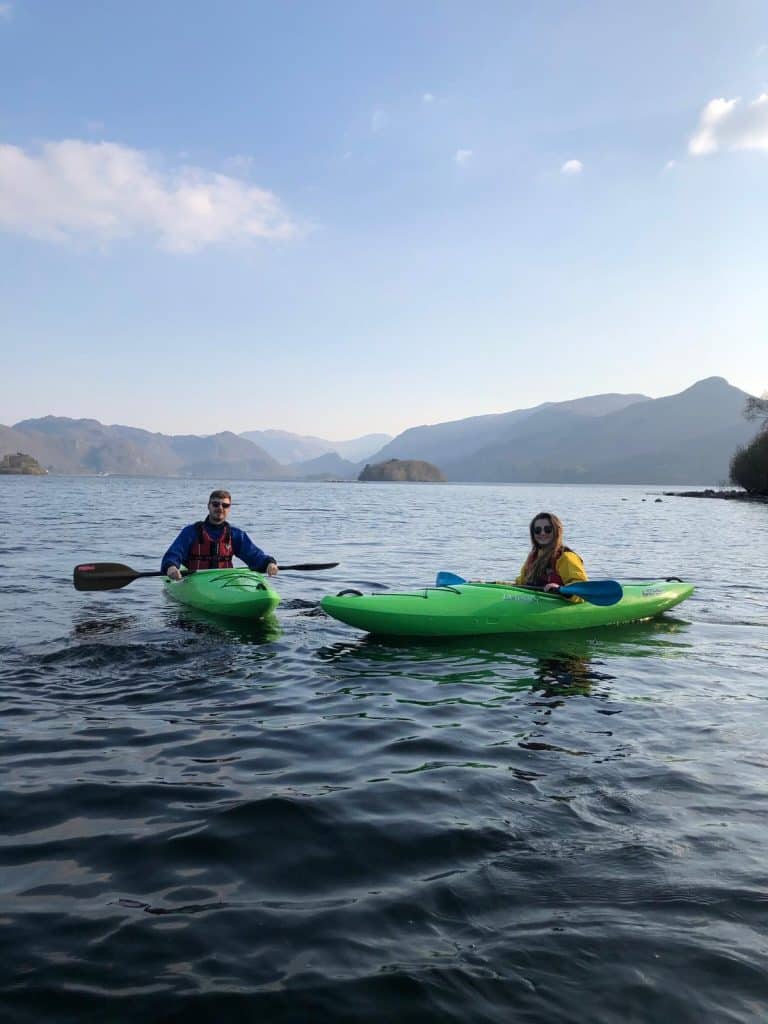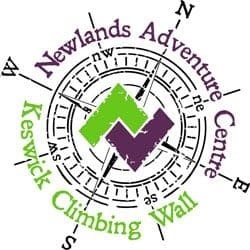Sessions at 9:30AM and 1:30PM
Meet-up at Newlands Adventure Centre
£50 per person per session
Kayaking
The Lake District is renowned for its stunning natural beauty, with Derwentwater being one of the most remarkable features in this idyllic region. If you’re looking for a fantastic way to explore this area’s breath-taking scenery, why not try kayaking.
This activity is ideal for both amateurs and experienced kayakers, with options for all skill levels. Regardless of your level of expertise, you are guaranteed to have a fantastic time on this kayaking adventure.
From the feeling of being out on the water to taking in the awe-inspiring natural beauty of the area, this unforgettable experience will leave you with memories that will last a lifetime. Whether you decide to go solo or bring a few friends along, the opportunities for adventure and fun will be endless. So what are you waiting for? Book your kayaking session today and get ready to experience the unparalleled beauty of Derwentwater!
What to Expect
You will first meet your instructor at Newlands Adventure Centre where you will be kitted up for your session! When ready, we will drive you down in one of our vans to the Marina.
Our water base is at the northern end of Derwentwater and once arrived our Instructor will give a land based introduction to the skills needed to control your Kayak. Once happy its onto the Lake and the fun really begins!
From exploring an island to playing games every session is different and will be catered to your abilities. One thing is for sure, you will leave the Lake with big smile on your face! Kayaking is one of our more demanding but ultimately rewarding activities.
Participates must be 8 years old or older.

Kayaking FAQs
Kayaking is a water sport in which a person sits in a kayak and paddles it through the water. Kayaks can be used for recreation, racing, or fishing.
There are many different types of kayaking, each with its own purpose. Some of the most common types of kayaking include:
- Recreational kayaking: This is the most common type of kayaking and is done for fun. Recreational kayaks are typically stable and easy to paddle.
- Sea kayaking: Sea kayaks are designed for paddling in the ocean. They are typically more seaworthy than recreational kayaks and have features like spray decks and hatches to keep the kayaker dry.
- Whitewater kayaking: Whitewater kayaks are designed for paddling in fast-moving water. They are typically very maneuverable and have features like high-volume hulls and rockered bottoms to help them handle the waves and currents of whitewater.
- Touring kayaking: Touring kayaks are designed for long-distance paddling. They are typically long and narrow, with features like comfortable seats and storage compartments.
- Fishing kayaking: Fishing kayaks are designed for fishing from a kayak. They typically have features like rod holders and livewells.
The basic skills needed for kayaking include:
- Paddling: The most important skill for kayaking is paddling. Paddling can be learned in a few hours, but it takes practice to become proficient.
- Stopping: Kayaks can be stopped by using the paddle to slow them down or by using the rudder.
- Turning: Kayaks can be turned by using the paddle to steer or by using the body weight to lean in the direction of the turn.
- Escaping from a capsize: If a kayak capsizes, the paddler can escape by rolling the kayak back over or by swimming to shore.
Sure, here are 5 FAQs about kayaking:
- What is kayaking?
Kayaking is a water sport in which a person sits in a kayak and paddles it through the water. Kayaks can be used for recreation, racing, or fishing.
- What are the different types of kayaking?
There are many different types of kayaking, each with its own purpose. Some of the most common types of kayaking include:
- Recreational kayaking: This is the most common type of kayaking and is done for fun. Recreational kayaks are typically stable and easy to paddle.
- Sea kayaking: Sea kayaks are designed for paddling in the ocean. They are typically more seaworthy than recreational kayaks and have features like spray decks and hatches to keep the kayaker dry.
- Whitewater kayaking: Whitewater kayaks are designed for paddling in fast-moving water. They are typically very maneuverable and have features like high-volume hulls and rockered bottoms to help them handle the waves and currents of whitewater.
- Touring kayaking: Touring kayaks are designed for long-distance paddling. They are typically long and narrow, with features like comfortable seats and storage compartments.
- Fishing kayaking: Fishing kayaks are designed for fishing from a kayak. They typically have features like rod holders and livewells.
- What are the basic skills needed for kayaking?
The basic skills needed for kayaking include:
- Paddling: The most important skill for kayaking is paddling. Paddling can be learned in a few hours, but it takes practice to become proficient.
- Stopping: Kayaks can be stopped by using the paddle to slow them down or by using the rudder.
- Turning: Kayaks can be turned by using the paddle to steer or by using the body weight to lean in the direction of the turn.
- Escaping from a capsize: If a kayak capsizes, the paddler can escape by rolling the kayak back over or by swimming to shore.
- What are the safety precautions that should be taken when kayaking?
There are a number of safety precautions that should be taken when kayaking, including:
- Always wear a life jacket.
- Check the weather before you go kayaking.
- Let someone know where you are going and when you expect to be back.
- Be aware of your surroundings.
- Paddle within your limits.
- Be prepared for the unexpected.
- Where can I go kayaking?
There are many places where you can go kayaking. Some popular places to kayak include:
- Rivers: Rivers are a great place to kayak for beginners. They are typically calm and easy to paddle.
- Lakes: Lakes are a great place to kayak for experienced paddlers. They offer a variety of paddling conditions, from calm to choppy.
- Oceans: Oceans are a great place to kayak for experienced paddlers who are looking for a challenge. They offer a variety of paddling conditions, from calm to rough.

